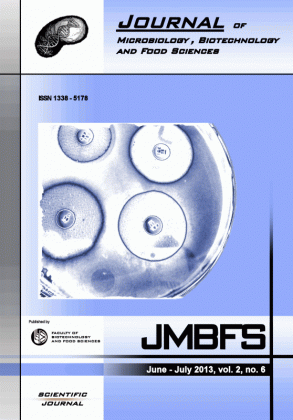ISOLATION, SCREENING, IDENTIFICATION AND OPTIMIZED PRODUCTION OF EXTRACELLULAR CELLULASE FROM BACILLUS SUBTILIS USING CELLULOSIC WASTE AS CARBON SOURCE
Keywords:
Cellulase, bacteria, molecular identification, 16S rRNA, Bacillus subtilisAbstract
The bioconversion of cellulose is important for global stabilization and a sustainable human society. In this study, efficient cellulolytic bacteria were screened and isolated from decayed lignocellulosic waste. Among the isolates, three strains, NASCB-5 , NASCB-8 and NASCB-12 showing higher potential for cellulase production were purified and sub cultured on carboxymethyl cellulose (CMC) agar plates. Among the three isolates NASCB-5 had given maximum enzyme activity.The isolates NASCB-5 were identified as Bacillus subtilis strains by morphological, physiological, biochemical and 16S rRNA gene analysis. The isolated strain produced cellulase enzymes complex, which suggested synergic cellulolytic systems in Bacillus subtilis. Cellulase was produced in cellulase enzyme production media containig waste paper as Carbon source and the culture conditions like temperature, pH, and Incubation time and medium components nitrogen sources were optimized. Optimal concentration of inoculum for enzyme production is 2 % and incubation time is 60 hrs. Optimum temperature and pH of the medium for the cellulase production by Bacillus subtilis was 40 0C and pH 7.Downloads
Download data is not yet available.
Downloads
Published
2013-06-01
How to Cite
K. Rathnan, R., John, D., & T., B. (2013). ISOLATION, SCREENING, IDENTIFICATION AND OPTIMIZED PRODUCTION OF EXTRACELLULAR CELLULASE FROM BACILLUS SUBTILIS USING CELLULOSIC WASTE AS CARBON SOURCE. Journal of Microbiology, Biotechnology and Food Sciences, 2(6), 2383–2386. Retrieved from https://office2.jmbfs.org/index.php/JMBFS/article/view/7088
Issue
Section
Microbiology
License
Copyright (c) 2013 Rahna K. Rathnan, Divya John, Balasaravanan T.

This work is licensed under a Creative Commons Attribution 4.0 International License.
All papers published in the Journal of Microbiology, Biotechnology and Food Sciences are published under a CC-BY licence (CC-BY 4.0). Published materials can be shared (copy and redistribute the material in any medium or format) and adapted (remix, transform, and build upon the material for any purpose, even commercially) with specifying the author(s).

